Greetings
It has been a long week for me. I had several big projects at work, and we had finally had some cold weather. Of course cold is always a relative term. I do not think we can complain when it gets to 15 degrees because much colder temperatures are coming.
It did officially get down to 6 degrees one morning 4-5 days ago. It did not get above freezing for several days. However there has been no snow. Now the temperatures are rising. I went out and raked some leaves the last few days in the morning before work.
Indeed it is to get to close to 70 degrees this coming Wednesday. That really will confuse the plants.
We had a good rain on Friday afternoon. As the ground was not frozen it all soaked in. That will particularly have some bulbs thinking about waking up.
Last Week- Week #2
Another week is in the books.
We had a closer contest this past week. The winner was the orchid.
The red double tulips had strong support, staying even with the orchid for the first 20 votes. Here were the final totals:
Here is the wild card race after two weeks:
Week #2 Red Double tulip 27%
Week #1 Tiger Kitten daylily 24%
Week #3
#1 Red Corydalis
March 27, 2021
I grew Shirley Poppies this year for the first time. As with Iceland poppies, I grew them from seed. I harvested many of the seeds. I will be ready to start the next generation in a little over 3 weeks.
It would be an understatement to say they were a keeper. This will not be the first Shirley poppy in the contest this year.
They are annuals, which means have to plant them each year.
They bloomed longer than the Iceland poppies, blooming into the second half of July. I really wonder whether, if I had planted some seed in that same bed, I could have had flowers all year.
Here are a few things about Shirley poppies.
They were developed by a vicar in England from the parish named...wait for it... Shirley. I bet you saw that coming. His name was William Wilks.
There are different varieties of Shirley poppies. Some are doubles.
Shirley poppies are a cultivar from the species Papaver rhoeas. That is the red flowered corn poppy. It is also known as the Flanders poppy. Artificial (paper or plastic) versions are worn in remembrance of those who died in war, with the tradition starting after World War I, which saw a great deal of bloodshed in Flanders. Some people may know of the poem "In Flanders Field."
Here is more about these beauties.
https://en.wikipedia.org/wiki/Shirley_poppy
#5 Bluebells
April 17, 2021
Sometimes I have had a special week where there is a team competition between colors. There are such wonderful colors in the garden. Think about it. Blue. Deep red. Bright yellow. Orange. Black.
I think the captain of team Blue would be the Bluebell. Not only is the bluebell color wonderful but the plant has several characteristics that get it near the top of the favorites list.
It spreads on its own rather extensively. At the same time I would not call it "invasive" as it is easily dug up if you do not want it in a particular place.
It is a bulb/tuber that looks like a carrot if you dig it up. It transplants easily. You can pot it up in the spring, if you get it into the pot before it gets to be more than an inch or two.
It is a wonderful companion plant to other spring plants. It particularly goes well with larger hosta. See the bonus pictures. And tulips.
It is tall for a spring flower, getting to be 12-15 inches tall. It really should be moved if growing around smaller plants. (It goes well with larger hosta. It swallows the smaller ones.)
Bluebells come as a second wave of blue in the spring. The first wave was the scilla/squill. The bluebells this past spring bloomed in late April. The scilla were in early April.
Bluebells are finished by June 1 at the latest. They dry up and you can remove the spent foliage.
These are Virginia Bluebells. They are in the genus Mertensia. The species is virginica. They are a native North American wildflower. I remember seeing them in Rocky Mountain National Park, at close to 8,000 feet. There they are found along mountain streams.
Bonus Section
Bluebells
This next picture almost made it into the contest. (Actually there were two very nice versions of that same picture.) You can see how bluebells change color from pink to blue. It was just last week I was discussing trillium grandiflorum changing from white to pink.
 |
| April 25, 2021 |
 |
| April 28, 2021 |
This is hosta Sagae with bluebells.
 |
 |
| May 6, 2021 |
There is also a rare white version of the Virginia bluebell. It is sufficiently rare that I have never been able to find it in commerce.
Iris
Here you can see an iris with the beard, followed by an iris without the beard.
 |
| Menehune |
 |
| Tom Shaffer |
 |
| April 16, 2021 |
 |
| George Baker March 27, 2021 |
 |
| not sure of the name |
 |
| Beth Evans April 4, 2021 |
I want to say something else about combinations. I probably do not take pictures of combinations as much as I should.
Here are some of the betters ones I found.
Right Now
At the office we have one of the starfish sanseveria. I love those plants. This one is decent size. It will grow a new branch every once in a while. Well, we noticed that one such nubbin looked different. It turns out to have been a bud.
Here has been the progression so far.
 |
| November 28, 2021 |
 |
| November 30, 2021 |
 |
| December 5, 2021 |
 |
| December 10, 2021 |
 |
| December 11, 2021 |
I think this is going to be interesting. Here is a closeup.
 |
| December 11, 2021 |
These are more pictures from the office.
This is a newly developed tradescantia, named Nanouk. I can't wait for it to get big.
Julia's recipe
Pork vindaloo
This recipe came from the newspaper which said they got it from America's Test Kitchen. It purports to be a less spicy version of a Goan dish. It's still pretty spicy. Of course, I have no experience (that I know of) with Goan cooking, so maybe it's so very hot that this is tame by comparison. You should feel free to use less of the hot components. This is a longish low bake in the oven. I did bake it, but a slow cooker would be good too. Make it on the weekend. Your house will smell good, and if you make it in the amount described, there will be leftovers for lunch.
After the guajillos had been softening for 10 minutes, I dumped them into the food processor along with the ginger, garlic, salt, pepper and all of the ground spices.
I zizzed up the mixture and then added another 1/2 cup of water (just tap water).
Next, I put the oil in a Dutch oven and added the onions. I cooked the onions over medium heat for about 5 minutes until they were sort of soft.
Next, I emptied the contents of the food process into the Dutch oven with the onions and stirred the mixture over medium heat until everything was mixed and fragrant.
Then I plopped the pork on top. I rolled the pork over so it was all covered (to some degree) with the sauce.
I emptied the last of the food processor contents on top of the meat, put a lid on the Dutch oven and put it in the oven.
Here it is about 2 hours later. It was done when I could pull the meat apart.
Which I did. I removed the few pieces of fat that were lying around in the pot being unappetizing. I added 2 tablespoons of water and 2 tablespoons more of vinegar to loosen up the spice mixture a bit.
Here it is in the bowl. We served it with rice. Some kind of Indian bread (naan for instance) would be good.
Here is the link to the blog with all of Julia's recipes
https://mearskitchen.wordpress.com/
Odds and Ends
I must confess something. I am a proud parkway gardener. That means that I garden all the way down to the curb. I have done this for decades. Gardening in the parkway allows so many people to see your garden. There are the walkers. There are also people who just drive by and open their windows. They can almost touch such special plants as the daylily Ruby Spider, and the grown from seed Tree Peonies. Then there are all those little bearded iris I planted this fall.
Here was the stretch along Fairview Street on May 1, 2021.
Well there is a downside to parkway gardening. Utilities. They sometimes want to dig in their right of way. Their right of way is my parkway garden.
In almost 40 years of gardening I think this has been a problem maybe 2-3 times. There was the time the City had to put in some new water main thing. Another time there was a project that required putting in new curbs. We got notice and actually moved plants that were one foot from the curb.
Well, perhaps you can guess where this is going. The other day we got some door-hanger announcement. We knew something was up because we saw those white painted lines in the street, near the garden. Apparently some company has city permission to become a competitor to the local cable or internet company. But that means they have to install their own cable.
Gardening is not always about spring flowers and wonderful colors.
About a week ago there were only 2 states with Blizzard warnings. One was Alaska. OK.
But the other one- was Hawaii. Did you know Hawaii has really tall mountains? One is 13,000 feet tall. They have snow on their mountains.

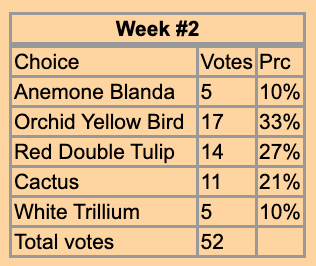



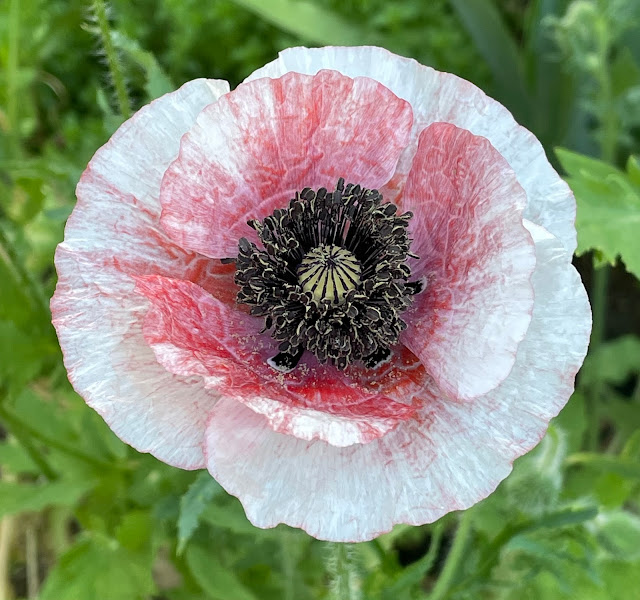
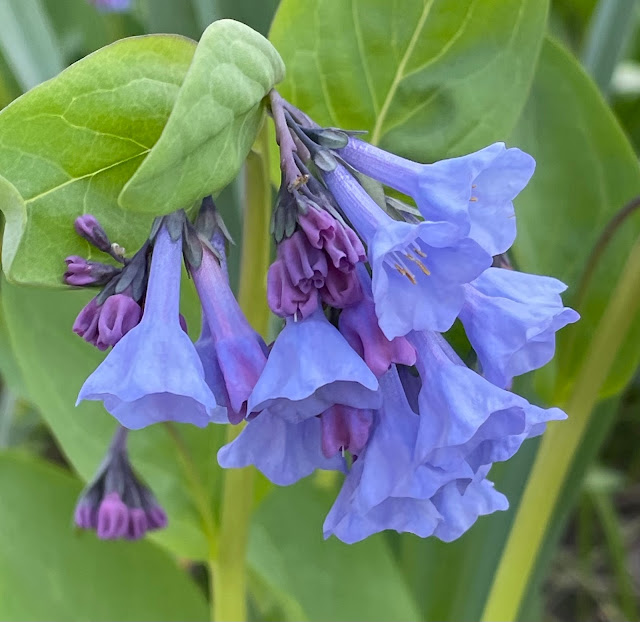














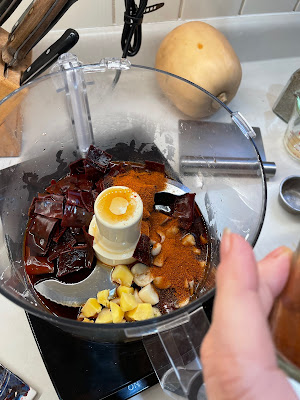






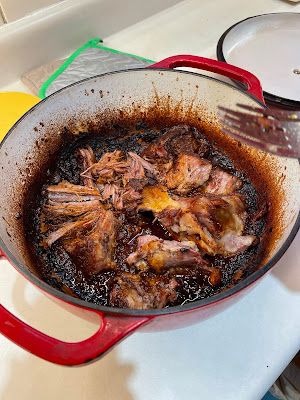




4 comments:
I really like the photos of the combinations of flowers. They make me think of the bouquets we used to see at at our local farm market in Connecticut. This is how I leaned that contrary to popular opinion, orange and purple look GREAT together. That bonus photo--the one just before the sanseveria--is just stunning. My idea of a perfect garden.
Meanwhile, I can smell the pork vindaloo. When's dinner?
Tough photo choice, but the bluebells won out because, well - bluebells! I wish mine would start spreading, I suspect they are not quite happy enough in their current location though.
I *love* the combination in the phlox-daylily photo. If the photo had been a bit more focused on the flowers, I would have voted for it. With our flower beds being away from the house, and passers-by see it while going 60+ mph, I've come to the conclusion that large chunks of colors and combinations that reach in and slap my retinas is a good thing.
I hope the damages from utility work will not be too damaging to deal with. I guess if one must look for a bright side, it's the opportunity to make changes that haven't been done because they weren't urgent enough yet??? Nope, not working. It stinks that they're digging up your garden.
I forgot to ask - do you get a chance to chat with the city to see what the plan is, or do you dive in and start moving things hoping it's the right spot? And will they be running underground wire to your house?
Pat-The picture you like in the bonus section has all sorts of coneflowers. I sometimes envision a bed with just those flowers, in all different colors.
I do think almost any color combinations go together. At least with flowers.
Gail- I do think they will somewhat go underground. The digging seems to be closer. There are more flags and painted lines.
I have not talked to the city to find out who I might contact.
If I can control where they put the holes that might help.
There is no real place to put plants in December. Buckets in the back garage. That assumes the ground is not frozen.
Post a Comment